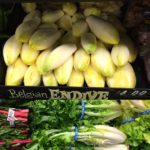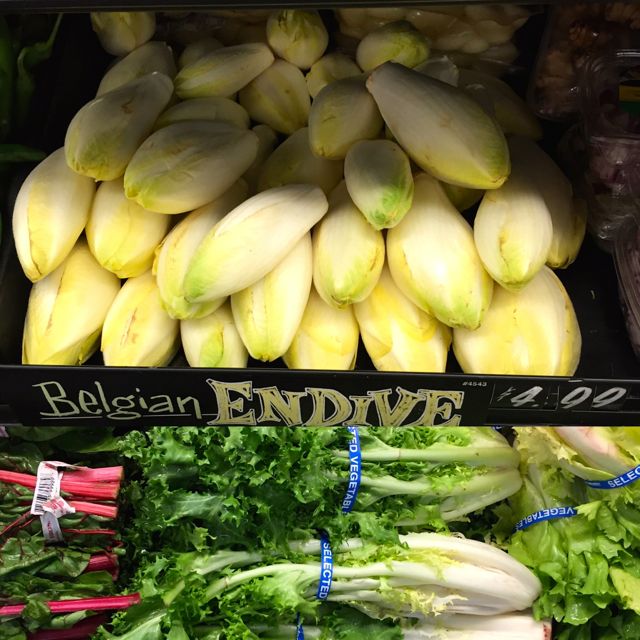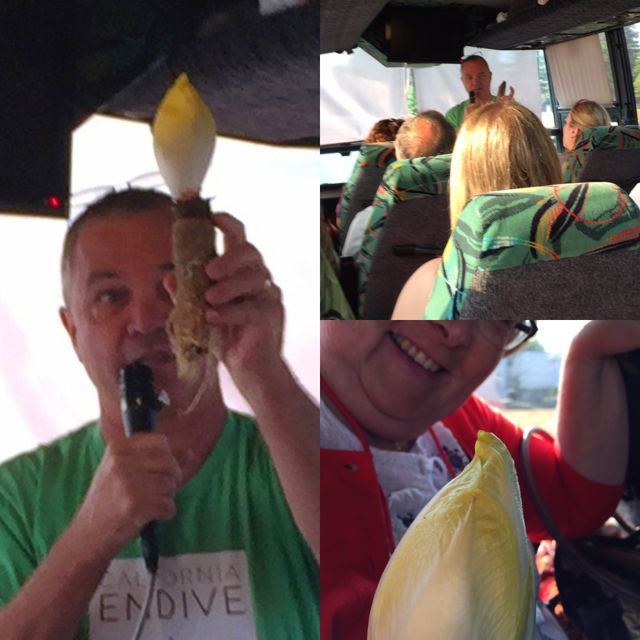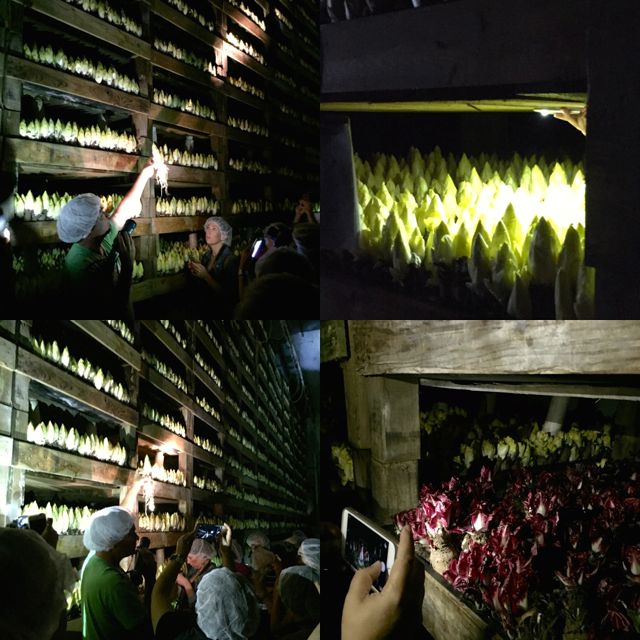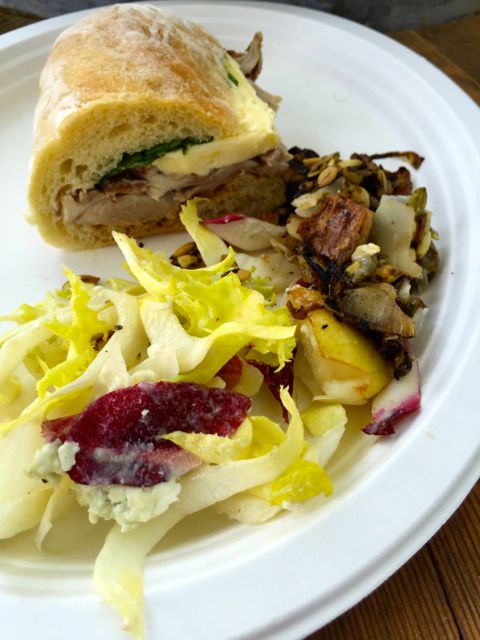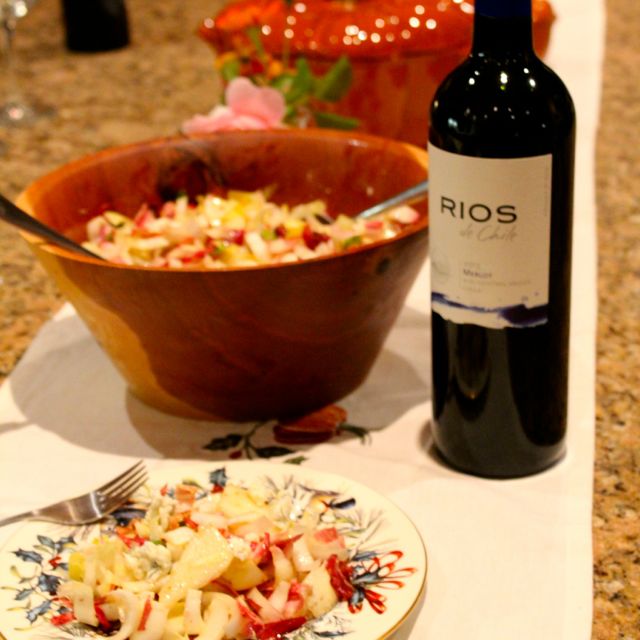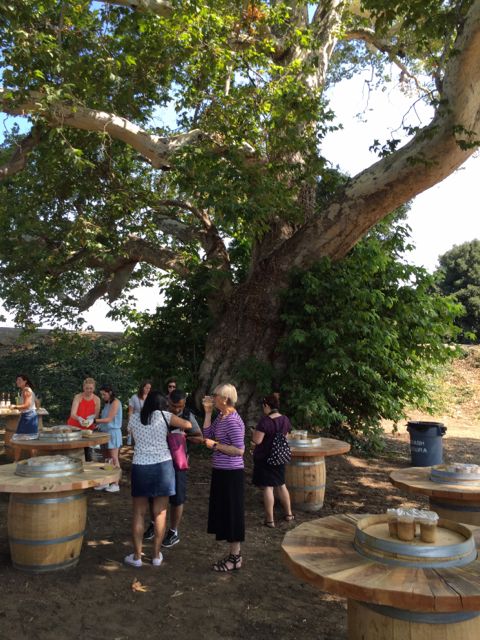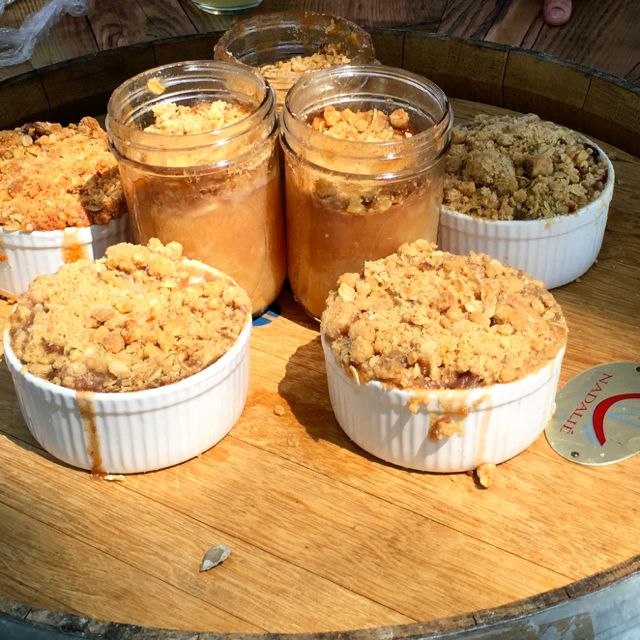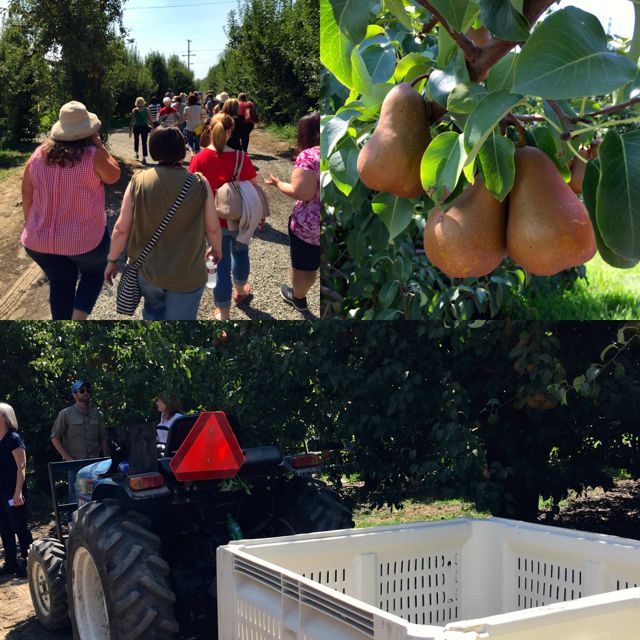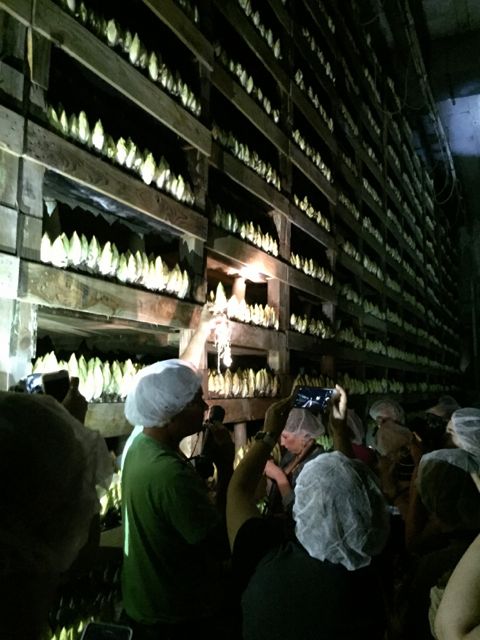
Belgian Endive (pronounced “Ahn-Deev” is grown inside in complete darkness, unlike endive (pronounced N-Dive) which is grown in a field like lettuce.
You say tomato and I say “to-mah-to”, but both pronunciations of the word mean the same thing, right? Not so with “endive”! Whether you say “N-Dive” or “Ahn-Deev” makes a big difference! Although they are both members of the chickory family, they are completely different.
If you say “N-Dive” you are talking about a curly edged green that is grown outside. It can be called curly endive, and other plants that are related to it are escarole and frisee. If you say “Ahn -Deev” you are describing Belgian endive, with tightly packed leaves and an elongated shape that is grown indoors in complete darkness.
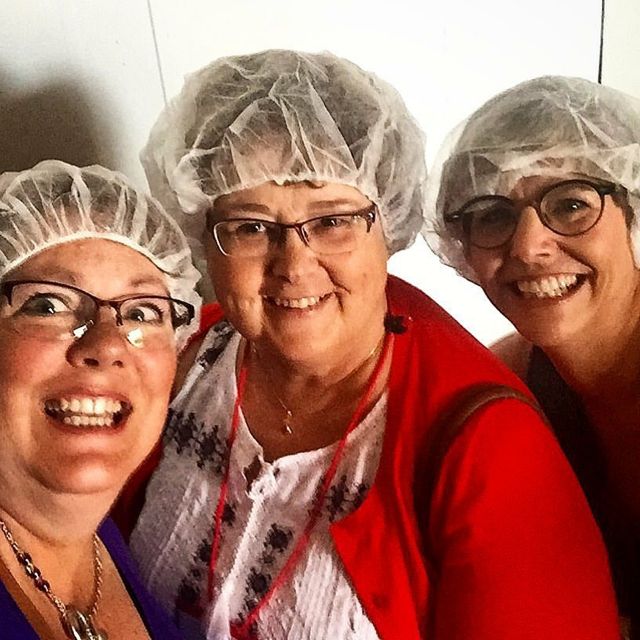
Food Bloggers touring California Endive Farm (from left) Sara from My Imperfect Kitchen, Mimi Avocado, and Nancy from A Communal Table
During the International Food Bloggers Conference in Sacramento, Ca. I was thrilled to visit California Endive Farms as part of a pre-conference tour. Our host was Rich Collins, the founder of the only Belgian endive farm in the United States. He told us about how he happened to get into the business of farming endive (without any background in agriculture) as we rode a bus to the farm in Rio Vista, Ca. Only a few months earlier he had officially retired from running the business, but obviously he is still passionate about educating food enthusiasts about Belgian Endive.
As you can see, the Begian Endive grows like a bud from one end of a root of the chickory plant. Seeds from specially selected chickory varieties are planted in fields in the late spring, with foliage growing over 5 months to be knee-high. In the fall, the foliage is mowed and the roots are harvested from the field with the cut green bud still intact. It is important that the root have this bud, because from this bud the Belgian Endive will grow!
We were invited to step inside a large and very cold building where the chickory roots are kept in an almost-frozen state. In this dark, cold environment the roots are kept from growing — it’s like winter in there. There are bins of roots stacked upon each other in the quiet windowless space, frigid and dark. The chickory roots can be kept in this state indefinitely until the farmer is ready to grow the Belgian endive.
When the farmer is ready to grow Belgian Endive, the roots are taken out of that spaced, and each one is placed into a tray. The trays are moved to another dark building that is warmer and quite humid, and stacked on shelves from floor to ceiling. Now the roots begin to wake up – for them it’s springtime! A beautiful Belgian endive grows from the bud of each root, taking about four weeks until it is ready to harvest.
Since no sunshine reaches the buds, they grow to be white in color, or a very pale yellowish green. Red endive also grows in the dark.
Later in the day we were treated to lunch, including a very tasty Belgian Endive salad! In Europe the per capita consumption of Belgain Endive is 8 heads per year, but here in the USA we consume only 4 leaves per person per year! Our host hopes that those numbers will improve as more people learn about Belgian Endive as a healthful, nutritious vegetable. Here is nutrition information about Belgian Endive.
Have you ever tried Belgian Endive? I made this Endive, Pear, and Gorgonzola Salad with Champagne Vinaigrette during the holidays (its red and green!) but it is delicious any time of year!
We also visited a pear orchard to see pears being harvested, and to meet the family who owns the orchards and packing operation. We were treated to a wonderful lunch under a sycamore tree that is over 100 years old!
See those gorgeous tables? They were actually built by Rich Collins of the California Endive Farms! We had a beautiful lunch including Pear Crumble for dessert!
I had never visited a pear orchard before, and it was fun to notice that they use ladders, picking bags, and plastic fruit bins just like the ones we have on our avocado ranch. The trees aren’t as tall as avocado trees, so they don’t have to use picking poles — the harvesters can reach the fruit from the ladders.
I really enjoyed the tours that were offered before the International Food Bloggers Conference this year. Next year the conference will once again be held in Sacramento, Ca. They are talking about offering a tour on the day that the conference closes as well. There is so much to see in the area around Sacramento – any food blogger that is interested in how food is grown and where it comes from should consider coming! Sacramento is promoting itself as the “Farm to Fork” capital of the world. Don’t skip the tours – they were my favorite part!
The conference is held at Hyatt Regency Hotel right across the street from California’s State Capital. There is lots do downtown, many exciting eateries, and public transportation is nearby. This was my first year attending IFBC, and I am looking forward to next year’s conference.
Disclosure: I attended International Food Bloggers Conference at a discounted rate with the understanding that I would write three posts about the conference. This is the second of those posts.


